FREQUENTLY ASKED QUESTIONS
FREQUENTLY ASKED QUESTIONS
Kb
We often receive questions from customers whether they should opt for a stacker or forklift, what a free charge means and what the added value of a sideshift is.
We are happy to share our knowledge with you, so that you have all the information to make the right choice. That is why we have built up an extensive knowledge base that you can consult.
If you do not know how to find an answer to your question, do not hesitate to ask us the question.
1. Find or buy a used forklift?
1. Tips when searching for a used forklift
2. European directives
3. What should you pay attention to during a test drive?
2. What internal means of transport are there?
1. Pallet truck
2. Stacker
3. Forklift
4. Reach truck
5. Order picker
3. Choosing the right forklift
1. How do I choose the right forklift for my work?
2. What to look for when choosing the right drive?
3. What are the advantages and disadvantages of a half- or full cabin?
4. What is the difference between the various masts?
5. When to choose a three- or four-wheel forklift?
4. What forklift tires are there and what are they made for?
1. Which forklift tires are there and what are they made for?
2. Pneumatic tyres
3. Full rubber tires
4. Solid tires
5. Obligations when using forklifts
1. The forklift certificate
2. T-Licence
3. Insurance
6. Safety
1. Can a forklift go on the road?
2. Is a seat belt mandatory?
3. Tips for safe use of forklifts
4. Checklist safety forklifts
Tips when searching for a used forklift
Searching for the right forklift is not easy and the range on the internet is huge.
That is why it is useful to have a clear idea of your requirements and wishes in advance. We advise you to take a look before your purchase
in our knowledge base, there we share a lot of information that can help you make the right choice.
When you want to make a purchase after searching, it is important to know where to buy a used forklift
pay attention. vsheftrucks.nl has put together some tips for you.
Find a used forklift
Make a list of requirements and wishes that your internal means of transport must meet.
Once you’ve done this, you’ll know exactly what you’re looking for and what to look out for.
- Are you looking for a forklift with half or full cabin?
- What should be the maximum lifting height of the forklifts?
- Which type of tyre do you prefer?
Have you found what you were looking for and would you like to view the internal means of transport?
To help you view an internal means of transport, vshftrucks.nl has put together a number of tips for you.
Buy a used forklift
If you buy a used hefruck from an end user
you are often more advantageous than if you have it with the manufacturer,
dealer and/or specialist.
The flip side is that you don’t get a guarantee and never know for sure
in what condition the internal means of transport is.
In addition, there are also internal means of transport in circulation which
do not comply with European regulations, so always check carefully what you are buying.
To help you buy an internal means of transport, vsheftrucks.nl and number of tips for you.
Create a list of requirements and wishes
Of course, the search for the right forklift takes place on the internet. The Internet is playing an increasingly important role in many industries
because there is a lot of information available and the offer is brought together on various websites.
Before you start the search process, it is wise to get clear what your internal means of transport must meet and what your wishes are. Therefore, make a list of requirements and wishes.
Demand for maintenance history and last inspection
If you have found an internal means of transport, always ask about the maintenance history and whether the internal means of transport are periodically checked. If the company does this, you know that safety is of paramount importance. Internal means of transport should generally be inspected once a year. If the last inspection was carried out almost a year ago, you know that it needs to be inspected in the short term. If defects are detected at the next inspection, you know that you will be faced with repair costs.
Check that the internal means of transport complies with european directives
Any producer or supplier who markets a machine or installation within the EU is obliged to comply with the
provisions of European product directives laid down in the Commodities Act. By complying with the Machinery Directive and
other relevant product guidelines, liability is regulated and you prevent a legal offence.
Before buying an internal means of transport, always check whether:
1. The forklift is ce-marked.
2. A operating manual is provided.
3. The forklift is equipped with a nameplate and load diagram.
4. The forklift is equipped with all stickers and warnings.
5. The forklift equipped with the correct safety inspection.
All internal means of transport of vsheftrucks.nl are supplied inspected and bear a CE marking.
We only buy our vehicles from reliable suppliers and you do not have to worry about the above points at vsheftrucks.nl.
What should you pay attention to during a test drive?
Once you have found what you were looking for and you have made an appointment to take a test drive, we recommend that you always check the internal means of transport in detail. To help you, we have put together a number of tips for each other.
General inspection points
- Links
- Check the tyres (front & rear) for any damage, collisions and check the rims and bolts.
- Damages
- Walk around the truck and view the forklift and cage construction for any damage.
- Mast
- Check the mast for any damage.
- Lifting cylinder
- Check the lifting cylinder and hoses for any damage and/or leaks.
- Lifting chain
- Check the phillips head and chain for any damage.
- Forks
- Check that the forks are the same and, in particular, check the heel for any damage. When the fork thickness at the heel of the forks has decreased by 10%, the forks are no longer reliable and need to be replaced.
- Battery
- Check that the battery is clean and dry, if you see corrosion, this may be a sign of a poorly maintained battery.
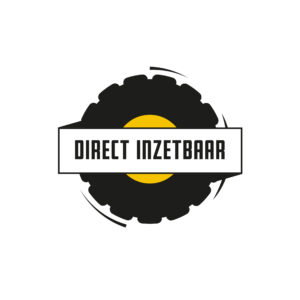
- Contact
- Insert the ignition key into the vehicle and check the battery, as soon as the control lights go out, the vehicle is ready for use.
- Belt
- Check if the belt works by pulling it.
- Hydraulic system
- Check the hydraulic system by lifting the mast completely, then check the pressure relief valve and then check the lifting cylinder and hoses for any leaks.
- Tilt cylinder
- Lower the mast, then check the tilt cylinder.
- Brakes
- Then check the brakes for any brake pressure loss.
- Handbrake
- Then check that the handbrake is working by moving forward Remove the handbrake and then drive forward to check the brake again.
- Leaks
- Before driving backwards, check the floor for any leaks.
- Reversing signal
- Reverse to check the brake again and listen carefully to see if the reversing signal is working.
- Horn
- Finally, check the horn and/or any blue spot light.
At vsheftrucks.nl we check all our internal means of transport in detail and deliver them including inspection.
We do not think it is necessary for you to come and check the internal means of transport with us for the above matters, because we do this for you.
Tips when buying a used forklift
Buying a forklift from a private individual
If you buy a forklift directly from an end user, you are often cheaper than if you buy it from the manufacturer, dealer and/or dealer.
The flip side is that you do not get a guarantee and are never sure in what condition the vehicle is wrong.
You also run the risk of buying a stolen vehicle, so before you make a purchase, try to obtain as much information about the selling party as possible via the internet.
At vsheftrucks.nl, you have nothing to worry about. We only buy from reliable suppliers.
In addition, we give a standard 30-day warranty and you also get the vehicle on trial for 14 days.
Buying a forklift from a specialist
When you buy a used forklift and/or other internal means of transport from an approved forklift company, the price is
usually higher, but that is not for nothing.
The vehicles are usually thoroughly inspected and often delivered including an inspection.
At vsheftrucks.nl we deliver our vehicles including inspection and you get a standard 30-day warranty and you get the vehicle on trial for 14 days.
If you are not satisfied within 14 days, you can return the vehicle.
If you want to know more about how it works with us, click here or start searching.
Always draw up a purchase agreement
When you buy a used forklift and/or other internal means of transport, it is wise to have a purchase contract made.
This can prevent discussions about, for example, warranty after purchase. Always read the terms and conditions of the selling
party, so that you do not face any surprises.
With vsheftrucks.nl we do not hide our general terms and conditions, but you can view them at any time.
to view our terms and conditions, upon purchase you will be sent them again and if you have any questions about this you can always contact us.
At vsheftrucks.nl we believe in transparency, which is why you get our vehicles on trial for 14 days and get a 30-day warranty as standard.
If something happens that both sides have not been able to take into account, we believe in doing business fairly and we will seek dialogue with you.
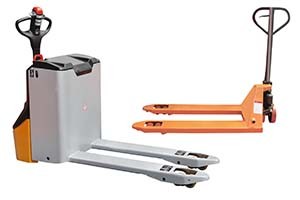
Pallet trolleys
Pallet trucks can be distinguished in manually driven models and electric versions.
Hand pallet truck
A hand pallet truck can be chosen if the distance between moving the goods is not too large. In addition, the lifting weight must be minimal. A hand pallet truck also offers advantages in a semi-trailer and/or bucket of a truck, due to its low weight and small size.
Electric pallet truck
If the distance for moving is large, it is better to opt for an electric pallet truck. An electric pallet truck is not only faster, but also the lifting capacity is higher. When transporting heavier goods, the electric motor prevents pushing and pulling.
Electric pallet trucks come in walk-in and multi-year versions. For long distances and high user frequency, the multi-age option offers additional lighting.
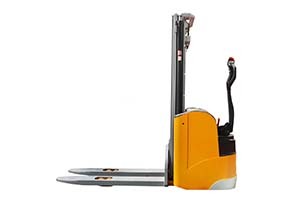
Stacker
The stacker is an electric pallet truck with a lifting mast, this makes it possible to stack several pallets on each other. Stackers offer the possibility to move goods horizontally as vertically and the operation is almost identical to that of an electric pallet truck. Broadly speaking, we distinguish 2 types of stackers: narrow gauge and wide track.
Narrow gauge stacker
In the case of narrow gauge stacker, the support arms of the truck are positioned so close together that the fork rests on the arms in the lowest position and only single-deck pallets can be transported.
Wide-track stacker
Wide-gauge stackers can also handle double-deck pallets, because the fork falls in the lowest position between the support arms of the truck.
Stackers come in walk-in and multi-round versions. For long distances and high user frequency,
the multi-year version offers extra lighting.
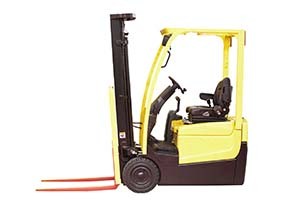
Forklift
If the use increases, the goods are stored at a high level, or the weight is too large for a pallet truck and /or stacker, then a forklift is chosen.
In large warehouses, the speed of a forklift offers a huge advantage, in itself of stackers.
Forklifts also offer the possibility to move goods horizontally and vertically.
Forklifts are ideal for intensive use and the lifting capacities and lifting heights are also greater than stackers. To prevent tipping, the truck is equipped with a counterweight. This makes the forklift less manoeuvrable than a stacker.
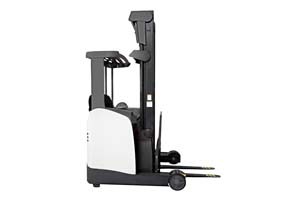
Reach truck
Reach trucks combine the advantages of a forklift with those of a stacker.
The required aisle width for a reach truck is therefore significantly smaller than that for a forklift.
This makes the reach truck an ideal warehouse truck for warehouses where high storage density and high productivity are desired.
Characteristic of reach trucks is the high lifting height, nowadays up to 11 meters. Because the driver is across the direction of travel, the view of the roadway and working environment is maximum.
Order picker
Order pickers or also called picking trucks, come in different shapes and sizes. Order pickers are mainly used in which orders must be collected over long distances and possibly at a higher level. The need for order pickers increases as the number of orders to be collected increases.
Low-lifting order picker
If orders have to be collected at a low level (1st and or 2nd level) one often chooses a low-lifting order picker. The layer-lifting order pickers can be used in narrow aisles.
High-lifting order picker
If orders have to be collected at higher heights, one often chooses a high-lifting order picker also called vertical order picker. This orderpiccker needs a wider aisle.
Internal means of transport can no longer be ignored for moving pallets and/or other heavy loads.
The maximum weight of the load to be moved and the maximum lifting height determine the choice of truck and mast.
The choice of the right forklift depends on a number of factors, the main factors are:
- How often will you use the vehicle (user frequency)?
- What is the distance you need to cover?
- What should be the maximum lifting capacity?
- What should be the maximum lifting height?
- What room for manoeuvre is there?
- In what environment will you use the forklift?
But there are other things to think about:
- The right drive
- Half or full cabin
- Type of mast
- Three- or four-wheel forklift
See more information about these four topics below.
1. The right drive?
Depending on where they are used, forklifts are powered by an internal combustion engine (diesel or LPG) or an electric motor. In places where a large lifting capacity is required, one will usually use a forklift with an internal combustion engine.
If you drive a lot on outdoor areas and there are many unevenness, such as holes and potholes in the road surface, then the choice of an internal combustion engine is also better. A battery of an electric forklift will suffer too much from a bumpy surface.
For outdoor use, LPG, diesel and electric forklifts are suitable, lpg and electrically suitable for indoor use. Inside or in rooms where there is no or poor ventilation, a forklift with an electric motor is generally used.
Diesel forklifts
A forklift with a diesel engine has the advantage that it can be quickly put into use. After daily inspection and refuelling, the forklift is available for a longer period of time. The engine is very reliable and requires little maintenance, moreover, the engines are very powerful.
Disadvantages are the vibrations and exhaust gases. In case of poor adjustment of the engine, this motor can blow out dirty and greasy smoke.
Therefore, diesel forklifts are often not used in the food and food industry.
No diesel lift truck may be used in rooms where there is little and/or no ventilation. The emission of soot particles can cause so much
possible by installing a particulate filter or regenerator.
The pros and cons at a glance:
Benefits:
- Can be used 24 hours a day
- Quick to use
- A lot of engine power
- Relatively cheap fuel
- Can be used for long distances
- Relatively low maintenance
- Reliable
Disadvantages
- Stench and soot emissions
- Noise
- Limited indoor use
- Not to be used with odour and taste sensitive substances

LPG Forklifts
LPG Forklifts are powered by a normal petrol engine where the fuel system has been adapted to run on LPG fuel
to drive. LPG stands for Liquiefied Petroleom Gas and is also used as autogas.
Because LPG flows into the cylinder in gas form, it mixes very well with air. This ensures good combustion, which
the exhaust gases contain very little carbon monoxide. LPG is therefore a relatively clean fuel.
Companies that drive LPG forklifts often have multiple LPG forklifts. An empty LPG tank can be easily changed
for a full tank so that the forklifts can be used constantly.
The pros and cons at a glance:
Benefits:
- Relatively clean
- Relatively cheap fuel
- Can be used 24 hours a day
- Can be used for long distances
- To be used in the food industry
Disadvantages
- Exchange tanks needed
- Storage for exchange tanks

Electric forklifts
In places where there is no or insufficient ventilation, a forklift with an electric motor is generally used.
The electric motor not only drives the forklift, but also drives the oil pump and the power steering.
The electric motors are powered by a traction battery. The traction battery only provides energy for a limited period of time, after which the traction battery is empty and needs to be charged.
This chemical process of loading and discharging can be repeated up to approximately 1,600 times. This of course depends on the use.
After that, the traction battery will have to be replaced.
The traction battery
The traction battery is the power source of the electric forklift. The battery provides the energy needed for the electric or reach truck to drive and to have the lift mast lifted.
A traction battery can consist of 12 cells = 24 volts to 48 cells = 96 volts. Most forklifts or reach trucks are equipped with a 48 volt battery = 24 cells. The choice of the number of volts of a traction battery depends on the use of the electric truck.
If you have little and light work, you can opt for a traction battery with less voltage. If you have a lot of heavy work, you choose a traction battery with a higher voltage.
Lithium-ion technology
There are also newer energy concepts, such as lithium-ion technology, that allow trouble-free charging of batteries during (coffee) breaks and do not require a special charging station. Such a lithium-ion battery is currently even more expensive, compared to a conventional lead-acid battery, but developments are moving fast, which is likely to reduce the price difference in the future.
The pros and cons at a glance:
Benefits:
- Clean
- No exhaust fumes
- No vibrations
- Quiet to use
- To be used in the food industry
Disadvantages
- Charging takes time, so not 24 hours a day
- Charger needed
- Expensive vulnerable batteries
- Charging area must meet inspection requirements

2. Half or full cabin?
The cab is the workplace of a driver and provides protection against noise, wind, cold, rain and/or dust.
Cabins are often equipped with several options, namely:
- Heating
- Airconditioning
- Speakers
- Antenna
- Volt connection
- Radio/multimedia systems
- Storage options
There are two types of cabins.

Half cabin
These cabs are usually equipped front and rear with safety glass and a roof window with see-through safety glass. Half a cabin is ideal when working mainly indoors.

Full cabin
These cabins are equipped with doors, which are often equipped with a sliding window. This window is usually made of steel and/or PVC. Do you mainly use the forklift inside? Then a complete cabin is generally not necessary. A complete cabin offers a lot of comfort, but if a driver often has to get in and out, it is perceived as disadvantageous.
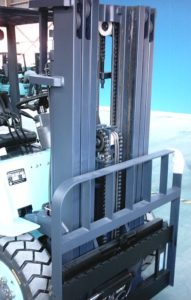
The mast determines the maximum lifting height of the forklift and there are different types of masts.
To be able to achieve the desired lifting heights, without using extremely long lifting masts,
two- and three-stage masts have been developed by manufacturers. (Also called duplex and plywood)
Triple mast
The triple mast is made up of three mast parts and reaches the highest height.
The mast parts collapse so that the driver’s view is minimally obstructed.
The advantage of a triple mast is a large lifting height at a low height.
The visibility forward is often limited, due to the lifting cylinder and with that the stability decreases as the mast is extended further.
To improve the driver’s visibility, the central lifting cylinder can be replaced by two side-positioned cylinders.
This construction allows you to have a better view to the front.
Dual mast
With a double mast, the mast parts collapse and the field of view is often better compared to a triple mast
Which aspects play a role in mast selection?
- Lifting height – the maximum height that the forks can reach with a fully extended mast.
- Maximum fork height – is usually indicated as the height up to the top of the fork. Please note that the underside of a pallet may be below this point.
- Total height retracted lift mast – the total height of the inserted mast determines whether the forklift can drive through low doorways.
- Free charge: this is the highest point that the forks reach, before the lifting mast begins to protrude above its retracted height. Free charging is important when working in rooms with a low height.
4. Three- or four-wheel forklift?
Combustion trucks are always equipped with four wheels, electric forklifts are available as three- and as a four-wheeler. The steering of a forklift and reach truck is different than compared to a car. In the case of the forklift and the reach truck, the front wheels are not
but the rear wheels or the rear wheel.
Most forklifts and reach trucks are equipped with hydraulic power steering.
This power steering ensures that you can always steer very easily with the truck without noticing how heavy it actually is.
To avoid damage to the steering system and tyre wear, try to turn the steering wheel as little as possible when a forklift or reach truck is stationary.
An important factor between the choice of a three or four-wheel forklift is the room for manoeuvre.
This is the space a forklift or reach lift truck needs to turn. This space is determined by a number of factors:
- Turning circle of the forklift or reach lift truck
- Width and depth of the load
- In- or leased mast
- The width of the driving routes and shelving paths
For a three-wheel forklift is an aisle with a width of 320 cm. while a reach truck has enough of an aisle with width of 280 cm. A narrow-aisle truck does not need more than approximately 175 cm.
A big advantage of a three-wheel forklift is the compactness of the truck. A three-wheel forklift has a smaller turning circle, because the rear wheel can rotate 180°. Ideal, where space is limited. A reach truck has an even smaller turning circle than a three-wheel forklift because a reach truck is shorter than a three-wheel forklift.
There are four-wheel forklifts where, as with the tricycle forklift, the rear wheels can also rotate 180°. As a result, the forklift needs 37 cm less space to turn
Tires perform an important function with a forklift, they must carry the forklift and the load, but are also important for safety.
Without the hard wear layer on the tyre, the forklift becomes unstable, allowing it to tilt.
Choosing the right tyre is not an easy choice, it depends on the terrain conditions.
Depending on these circumstances, a tyre shall be subject to requirements in the field of:
- Deadweight
- Driving comfort
- Rolling resistance
- Grip
- Suspension
With the right tyre choice, a lot of money can be saved on the annual operating costs. Downtime of the forklift due to tyre trouble can lead to high costs.
In general, forklifts have three types of tyres:
- Tyres
- Full rubber tires
- Solid tires
1. Pneumatic tyres
The stability of the pne treadmill ensures good behaviour when taking turns through the forklift. Stability is also of great importance when working at high lifting height. For pneumatic tyres, ensure the correct tyre pressure. Especially when working at height, uneven
tyre pressure is an unstable situation.
In addition, less heat accumulation occurs in the tyre, which can be an important advantage if long distances are covered with the forklifts. To increase the stability of the forklift, it is sometimes equipped with an extended front axle equipped with double wheels. This reduces the chance of tipping when moving heavy and wide loads, for example.
Benefits
- Good grip
- Good shock absorption / comfort
- Suitable for outdoor use
- Less heat accumulation
Disadvantages
- Risk of leaking available
- Unstable in case of uneven tyre pressure
- High building height
- Less heat development at long distances
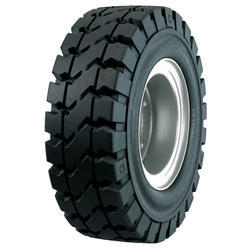
Tyres
2. Full rubber tires
Full rubber tires are the size of pneumatic tires but are filled with a verend rubber, instead of air. If the conditions under which the forklift has to work get worse, then full rubber tires are mounted. These tyres are reliable and do not require maintenance.
They can be used both at high temperatures and on bad roads. The tires combine the suspension of the pnene belt with the reliability of the solid tires.
The biggest problem for full rubber tires is the heat build-up. When a tyre suffers during deployment, due to high speeds, long transport distances and/or heavy loads, heat builds up in the tyre. If that heat cannot be processed, the vulcanization process of the rubber continues and the quality of the tire is permanently damaged.
In order to absorb the heat that occurs during the deployment as much as possible, soot particles are also added to the belt. Soot has an absorbent property and that prevents excessive wear
A disadvantage of soot particles is that they cause black stripes on the company floor. Those who don’t want those stripes choose non-marking bands. With these tires, the soot particles have been replaced by silica or chalk.
Benefits
- Stable
- Can’t leak
- Good grip
- No maintenance
Disadvantages
- Less suspension than pneumatic tires
- High building height
- Unstable with heavy loads
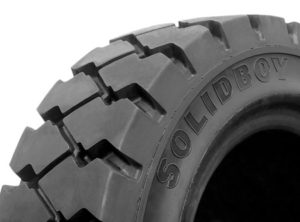
Full rubber tires
3. Solid tires (cushion or vokollan tires)
Reach trucks, stackers and electro pallet trucks are equipped with solid tires. On flat floors, such as in warehouses, the solid belt is easily usable. These tyres have a high load capacity and a long service life.
Because the shock absorption is less good due to the hard rigid tread, they are usually only used indoors, on smooth floors. However, some heavy forklifts also use this type of tire.
Benefits
- Stable
- No maintenance
- Low building height
- Tires can’t get punctured
Disadvantages
- No suspension whatsoever
- High pressure on the floor
We have listed the obligations for the use of forklifts for you:
1. The forklift certificate
It seems obvious that every forklift driver must have a certificate, but this is not the case. A forklift certificate is not mandatory, but the employer is responsible for ‘sufficient’ level of training of the drivers.
This includes various courses and certificates and the employer must be able to demonstrate who has been trained and which parts have been covered. The employer may also provide the training himself, provided that he can prove that he has a forklift diploma. However, this training must meet a number of conditions.
A forklift certificate clearly proves that there has been expert training. Always pay attention to the validity of a forklift certificate, if a forklift certificate has expired, it is mandatory to renew it. A certificate for the forklift has a validity of 5 years and the Inspectorate SZW checks whether drivers have a forklift certificate or thorough instructions. After obtaining a certificate, the driver must ensure that he is kept informed of developments, this can be done by means of refresher courses and or other refresher courses.
Employees are allowed to drive a forklift from the age of 16, but if they are 16 or 17 years old there must always be a supervisor present.
Consequences of driving a forklift without a forklift certificate
If an employer cannot prove that his employees are adequately trained, he is legally liable in the event of an accident and an accident is in a small corner.
If a company cannot properly demonstrate that the driver has had a thorough instruction, this can have unpleasant consequences:
- The Working Conditions Act can impose a (high) fine in the event of an accident if the driver does not have a valid forklift certificate
- The insurance does not pay out money in case of damage or injury
- In the worst case scenario, the Inspectorate SZW may decide to close the warehouse.
In addition, there is a lot of paper hassle involved. If a driver does have a forklift certificate, these types of things can be prevented and a forklift certificate more than meets a ‘thorough’ instruction.
2. T-Licence
Drivers of agricultural or forestry tractors and motor vehicles with a limited speed are then obliged to hold a T-licence Only if the forklift is wider than 130 centimetres it is mandatory for the driver to hold a T-licence.
The forklift must not be used to tow trailers or interchangeable machinery. This applies both to public roads and to areas accessible to all, such as public car parks.
No T-licence is required for forklifts that are smaller and only drive in the warehouse. In addition, it is not mandatory to have a T-license when you are loading or unloading on a public road in the immediate vicinity of the factory hall or warehouse. Of course, the driver of a forklift must always comply with the Occupational Health and Safety Legislation, which requires specific expertise from the driver.
3. Insurance
Every motor vehicle in the Netherlands must be insured. The Motor Vehicle Liability Act (WAM) is for vehicles with and without a registration number. This also applies to vehicles that drive on their own premises and this means that every forklift is therefore WAM insured.
Many companies do not take this rule very seriously, because forklifts often do not go on public roads and therefore do not expect accidents, but the labour inspectorate does check this.
In the event of an accident involving an uninsured vehicle, the damage will be compensated by the Motor Traffic Guarantee Fund. The owner of the vehicle eventually pays for this amount.
The WEGAM insurance
In addition, you can consider a WEGAM insurance (Employer Liability Insurance Motor Vehicles). This insurance covers the damage incurred by the driver of the forklift, something that the WA and company liability insurance do not reimburse.
Can a forklift go on the road?
A forklift on public roads is covered by the Vehicle Regulations.
The regulations state that the forklift must be equipped with:
- Two dipped-beam lights
- Two city lights
- Two taillights
- Two traffic lights
- At least two red reflectors on the back
- Warning flashing lights
- Reflective triangle at the rear of the vehicle
- Front and rear turn signals
The protruding parts such as the forks must be removed or shielded.
Furthermore, with a forklift you are not allowed faster than 25 kilometers per hour.
2. Is a seat belt mandatory?
No, a seat belt on the forklift is not mandatory. To prevent drivers from getting trapped under a tilting forklift, most forklifts are equipped with a seat belt.
The Working Conditions Decree states that mobile work equipment must be equipped in such a way as to minimise the dangers caused by tipping or falling over. This can be done by installing a belt and putting it on again and again.
However, the Working Conditions Decree identifies forklifts as a separate category, namely:
Forklifts which can carry one or more persons shall be equipped in such a way that the risk of overturning or their consequences is minimised by:
- A driver’s cab
- A device that prevents the forklift from tilting
- A device that ensures that, if the forklift tilts, there is sufficient free space between the ground and certain parts of the forklift for the persons to be transported
- A device that ensures that, if the forklift tilts, there is sufficient free space between the ground and certain parts of the forklift for the persons to be transported
- A device on each seat of the forklift, with which the persons present on the truck can secure themselves to the seat
- Or other devices with an equal level of safety
A belt is therefore a recognized facility with which companies comply with the law, but other solutions are also possible. These range from a fully closed cabin to a safety gate or safety bracket.
Such a bracket is located on either side of the driver and must be folded up to be able to leave a forklift. A bracket, like a belt, prevents drivers from getting trapped under a tilting forklift, but may be a lot more user-friendly in practice.
Do you or do your drivers hate using a seat belt? Always check out and discuss the alternatives to see what the right alternative is. After all, it is about you/their safety.
Regulations do not apply to reach trucks
The above rule does not apply to reach trucks. A forklift can tilt forwards and backwards. because a driver tends to almost always jump out of the vehicle in the direction in which the truck falls, the chances of entrapment are high. Therefore, a device is required that keeps the driver in place, whether that is a belt, bracket or cab.
However, a reach truck can only be abandoned at the rear, and if a reach truck tilts, it’s never backwards. The chance of a reach truck driver getting trapped is virtually nil. A belt, bracket or other device is therefore not mandatory on a reach truck.
3. Tips for safe use of forklifts
- Always remove the ignition key after using a forklift. This way, unauthorized persons cannot just use the forklift.
- Approve your internal means of transport at least once a year.
- Never drive a forklift without safety shoes.
- Always wear a helmet, a helmet protects not only when bumping, but also when falling products.
- If you are driving in an environment where there are many substances in the air that can prevent your vision, wear safety goggles.
- Thoroughly inspect the forklift for any damage before each use.
- Always charge batteries in a separate and well-ventilated room (smoking and open fire prohibited)
- Drivers must have specific expertise and be familiar with operating regulations and traffic regulations
- Drivers must be at least 16 years old and work under expert supervision until the age of 18.
- Never transport people as co-drivers, forks or as loads.
General tips
Drive without load with a horizontal mast
- Keep load as low as possible
- Pay attention to sufficient height
- Reverse at limited visibility due to the load
- Adjust the driving speed to the conditions
- Be aware of slip hazards
- Brake evenly
- Don’t take turns too fast
4. Checklist safety forklifts
Always check the forklifts before use for any damage and/or leaks. We recommend working with a daily/weekly checklist to identify defects in a timely manner and avoid dangerous situations.
To help you, we have created a checklist that you can use.
Please note: this checklist does not replace the annual inspection!
Inspection points prior to working with the forklift
- Tyres: Check the tyres (front & rear) for any damage and check the rim and bolts.
- Damage: Walk around the truck and view the forklift and cage construction for any damage.
- Mast: Check the mast for any damage
- Lifting cylinder: Check the lifting cylinder and hoses for any damage and/or leaks
- Lifting chain: Check the phillips head and chain for any damage
- Forkboard: Check that the fork board is secured and that the end guarantees are on it. The locking springs must work and this prevents
forks fall off on the side. - Forks: Check that the forks are the same and, in particular, check the heel for any damage. If the fork thickness at the heel of the forks has decreased by 10%, the forks are no longer reliable, report this immediately.
- Liquids: Check the engine oil and coolant (for combustion trucks), check the water level of the battery in the case of electric forklifts.
Check for driving
- Contact: Insert the ignition key into the ignition lock and check the battery, as soon as the control lights go out the vehicle is ready for use
- Seat: Adjust the seat so that all controls are easily accessible
- Mirrors: See if the mirrors are set correctly
- Belt: Check if the belt works by pulling it.
- Hydraulic system: Check the hydraulic system by lifting the mast completely, then check the pressure relief valve and then check the lifting cylinder and hoses for any leaks.
- Tilt cylinder: Lower the mast and then check the tilt cylinder.
- Brakes: Then check the brakes for any brake pressure loss
- Handbrake: Then check that the handbrake is working by driving forward. Remove the handbrake and then drive forward to check the brake again
- Leaks: Before driving backwards check the floor for any leaks
- Reversing signal: Reverse to check the brake again and listen carefully if the reversing signal is working
- Horn: Lastly, check the horn and/or any blue spot light
Check after driving
- Parking: Turn off the ignition and park the forklift with the mast facing forward and the forks rest on the floor and the forklift hangs limply. Make sure the wheels are straight.
- Parking brake: Check if the truck is in neutral mode and activate the parking brake
Content and quality of the information:
The administrator of this site only has an effort commitment. The quality and content of the information offered are checked as far as possible. The administrator cannot be held liable if the use of the information shows that it is not complete, correct or up-to-date in terms of content. Users of the website are invited to report the presence of incorrect, incomplete or surpassed information to the website administrator via our customer service (info@vsheftrucks.nl)






 Drive without load with a horizontal mast
Drive without load with a horizontal mast